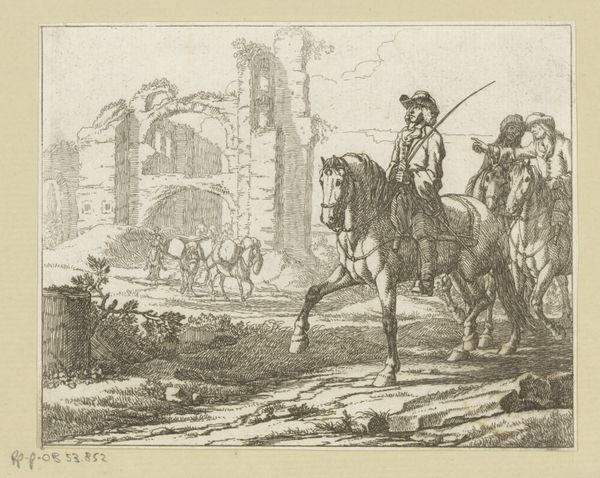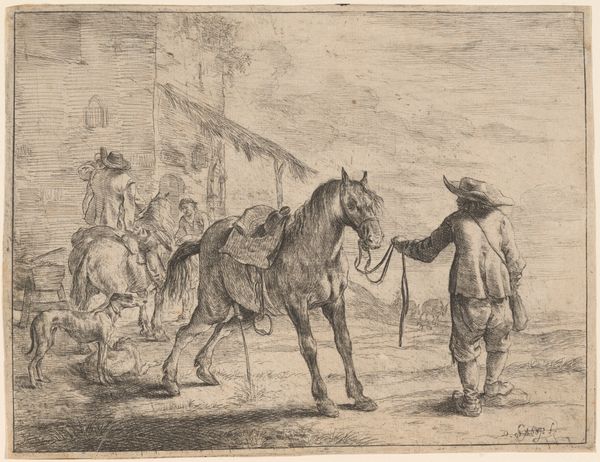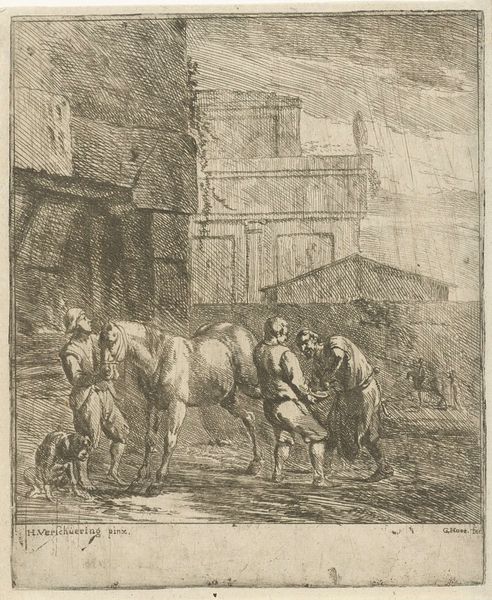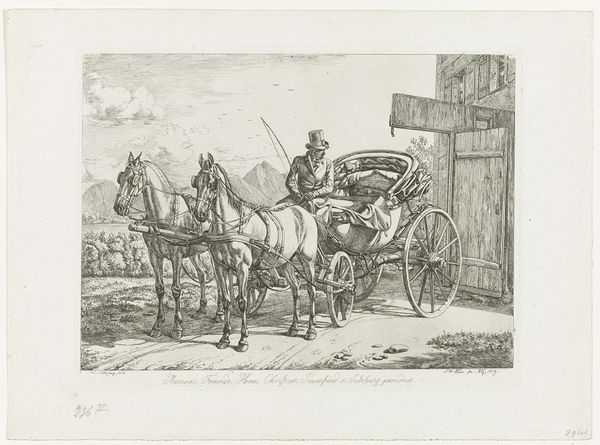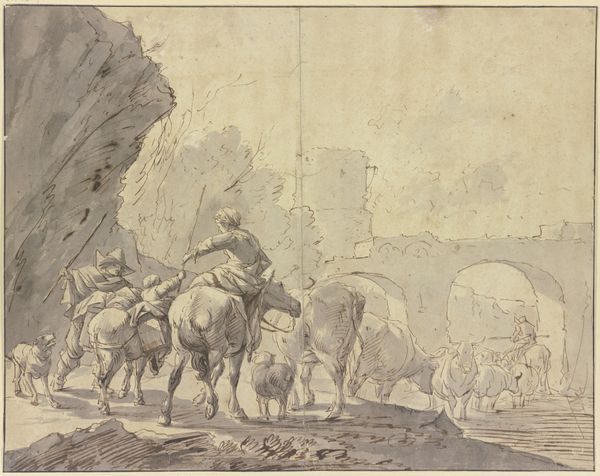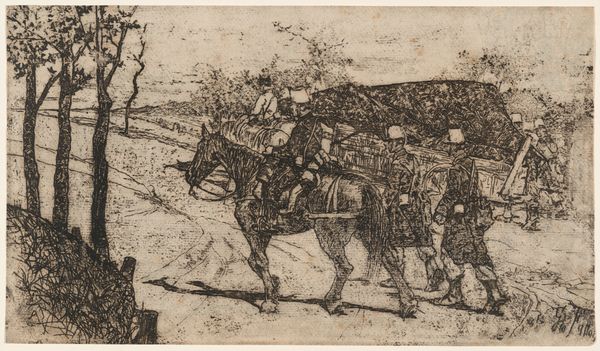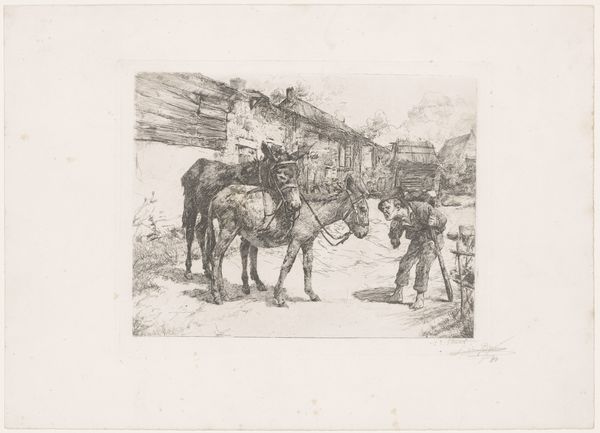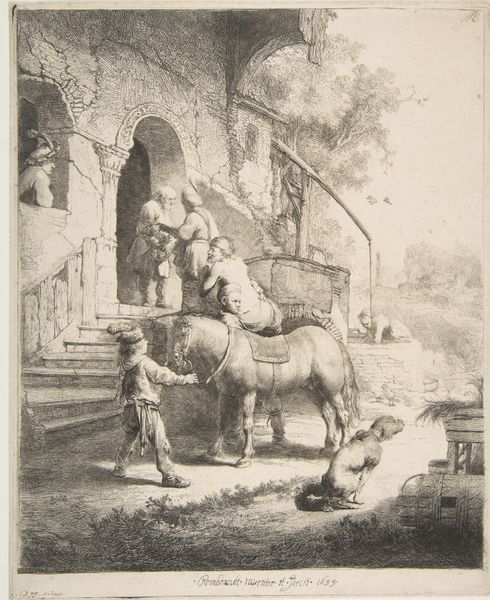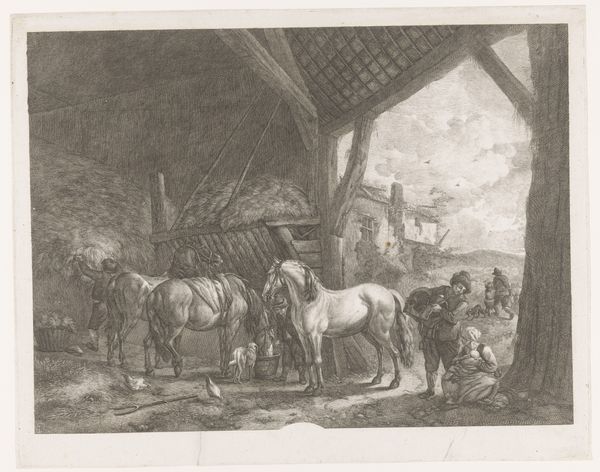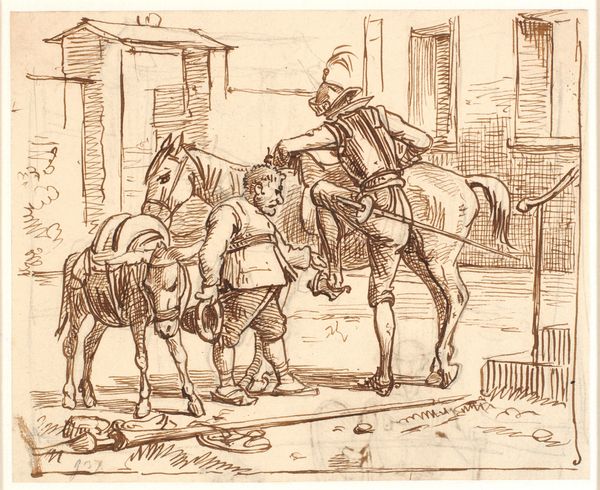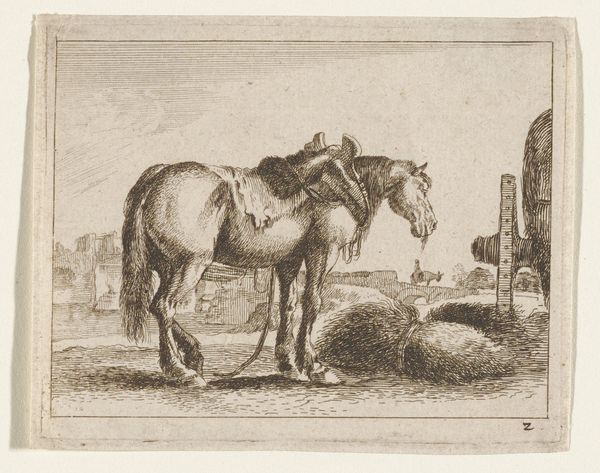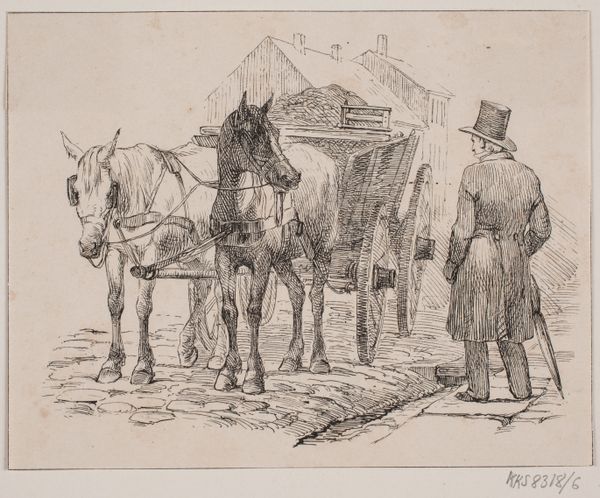
print, engraving
# print
#
landscape
#
figuration
#
engraving
Dimensions: plate: 17.1 x 22.7 cm (6 3/4 x 8 15/16 in.) sheet: 24.2 x 34.3 cm (9 1/2 x 13 1/2 in.)
Copyright: National Gallery of Art: CC0 1.0
Curator: Immediately, the density of lines strikes me, like whispered secrets etching themselves onto the paper. A kind of intimate intensity… almost melancholy. Editor: Yes, and in fact what we are looking at is "Cossack Horses in a Courtyard," an engraving from 1818 by Johann Adam Klein. Curator: Klein, huh? The name feels fitting, like a miniaturist absorbed in the quotidian drama before him. The way he captures the weight of the horses, their subtle sway—it’s beautiful! I’m really taken by the figure huddled against the wall... the narrative seems to be as much about rest and reflection as it is about soldiering. Editor: That's a great point. Remember that in 1818, Europe was very much recovering from the Napoleonic wars, witnessing the rise of nationalism. Prints like this served to not only document, but to also somewhat romanticize military life and its place in a changing social order. It puts these Cossacks very much in the European imagination. Curator: So, propaganda with pathos? It does strike me as… nostalgic? Maybe even aware of its own staged-ness. Like those two figures positioned in the arched doorway - they are present and not present all at once! The engraving technique heightens that ghostly ambiguity, doesn't it? Editor: Certainly, it's all part of the constructed image, but, look closely, it is quite telling who is at rest and who keeps vigil. The details serve less as naturalistic portrayals and more as commentary. Curator: Oh, for sure, I see that now. Still, I can’t shake the emotional immediacy—that burdened posture in the shadows—it pulls me away from strict analysis. Editor: I guess it’s in those contrasts that we begin to understand what this print might have meant in the shifting European landscape. I do find it telling that a printmaker selected this exact scene of supposed everyday life in military circles as a piece of artwork to create. Curator: Right. A crafted scene to show in parlors across the continent. Editor: Absolutely. Anyway, thanks for lending me your perspective and maybe forcing me out of my historicized viewpoints for a while. Curator: And you provided invaluable context that adds to my understanding of Klein's work. Thanks!
Comments
No comments
Be the first to comment and join the conversation on the ultimate creative platform.
